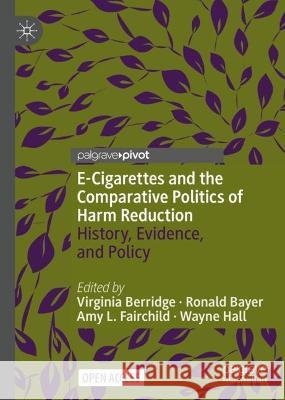E-Cigarettes and the Comparative Politics of Harm Reduction: History, Evidence and Policy » książka
E-Cigarettes and the Comparative Politics of Harm Reduction: History, Evidence and Policy
ISBN-13: 9783031236570 / Angielski / Twarda / 2023
This open access book offers the first in-depth study of the history and current debates surrounding electronic cigarettes comparing the UK, US and Australia. Since their introduction, e-cigarettes have been the subject of much public, media and regulatory attention, with discussion centring on whether these devices encourage or discourage smoking. This study delves into the history of policymaking and institutions in three countries which have taken different approaches to the regulation of e-cigarettes. In the UK, the tradition of harm reduction through nicotine has helped form a response which has endorsed e-cigarettes, though not without considerable controversy. In contrast, the US has a cessation-only anti-tobacco agenda, and Australia has effectively banned e-cigarettes. This book argues that each country frames the long-term use of nicotine differently and prioritises the health of different groups within the population of smokers or non-smokers, set against a broad backdrop of national responses to addiction. By taking this comparative approach, the authors explore the relationship between history, evidence and policy in public health more widely.
This open access book offers the first in-depth study of the history and current debates surrounding electronic cigarettes comparing the UK, US and Australia. Since their introduction, e-cigarettes have been the subject of much public, media and regulatory attention, with discussion centring on whether these devices encourage or discourage smoking. This study delves into the history of policymaking and institutions in three countries which have taken different approaches to the regulation of e-cigarettes. In the UK, the tradition of harm reduction through nicotine has helped form a response which has endorsed e-cigarettes, though not without considerable controversy. In contrast, the US has a cessation-only anti-tobacco agenda, and Australia has effectively banned e-cigarettes. This book argues that each country frames the long-term use of nicotine differently and prioritises the health of different groups within the population of smokers or non-smokers, set against a broad backdrop of national responses to addiction. By taking this comparative approach, the authors explore the relationship between history, evidence and policy in public health more widely.











